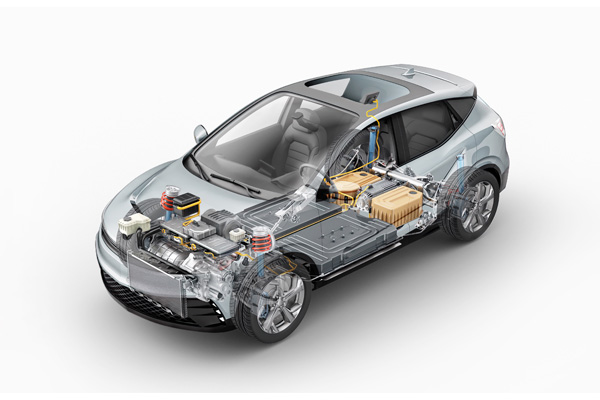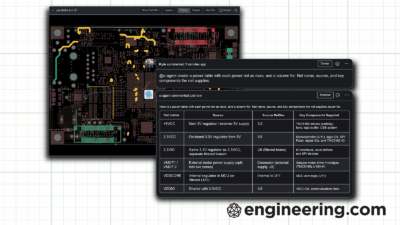Where does MCOIL fit in the evolution of DC-DC power supplies?
TTI Inc. has sponsored this post.

DC-DC power supplies have come a long way. Earlier designs were built with large, inefficient components that focused primarily on delivering current and regulating voltage. Recent approaches reflect a different set of priorities. Advances in semiconductor technology are enabling smaller systems with more advanced control, especially for managing transient behavior and load variation.
“With added integration and reduction in size comes the need to run more efficiently, with the ability to support high power density and high current requirements,” says Nalin Boonyong, Senior Sales Engineer at Japan-based electronic components manufacturer TAIYO YUDEN. “This trend drives power supply design to be smaller, high power, faster response and a reliable power source.”
The evolving requirements have made in-house development increasingly difficult. “There’s now a need for engineers to buy off-the-shelf products from power supply companies rather than rely on their own designs, due to the complexity and many variables they need to deal with,” Boonyong says.
These changes are shaping how power circuits are developed in both consumer and automotive applications, with effects reaching every supporting component — including inductors.
Power inductors play a central role in DC-DC switching circuits. They store and release electrical energy in the form of a magnetic field — either stepping down voltage, as in a buck converter, or stepping it up, as in a boost converter, depending on the needs of downstream components. The magnetic field energy smooths ripple currents, stabilizes output voltage and improves circuit efficiency — ensuring consistent, uninterrupted power delivery to integrated circuits.
As electronics continue to shrink, engineers need inductors with smaller footprints to fit within limited board space. Trends in miniaturization include increasing the switching frequency of DC-to-DC converters and in turn requiring smaller, lower-inductance inductors.
Different applications bring different demands. In the case of smart phones, smart devices and small electronics where space is a premium, there is a demand for inductors that are smaller with lower profiles to fit in with limited board space. Servers and EVs need inductors that can support higher current while maintaining high efficiency. In automotive systems, the focus shifts to high reliability and high temperature requirements.
“Engineers designing power inductors face numerous challenges including core loss, saturation, current requirements and thermal performance,” adds Boonyong. “The magnetic material used in inductor development is key and plays a critical role to ensure low core loss, high saturation current, with high permeability and with good thermal performance. On top of this, engineers must balance performance, reliability, low cost and small case size.”
Addressing these trade-offs starts with the material itself. TAIYO YUDEN has developed MCOILTM, a proprietary magnetic material which contains iron-based powder mixed with various other metal elements. This material is then coated with thermally stable oxides to form a mixture that has stable temperature characteristics, the ability to handle high current and with low loss magnetic material.
The MCOIL lineup is offered in three form factors. The first is a multilayer SMD chip type, created by printing patterns on ceramic sheets containing MCOIL magnetic material. The sheets are laminated, fired, assembled, and finished with external electrodes.
“This is the world’s first metal multilayer inductor available in the EIA case sizes 0402 and 0806,” says Boonyong. “Its operating temperature goes up to 165°C.”

The second is a high-performance wire wound SMD chip type in which a flat wire wound is formed and then enclosed with MCOIL magnetic material by a soft molding process, then external electrodes are formed at the end. It comes in EIA sizes from 0805 to 1008 and is rated up to 150°C.
The third is a large square type of wire wound SMD inductor formed with a magnetic MCOIL material core through a sintering process. Then the core is trimmed down, and electrodes are formed. Wire is then wrapped around the core and coated with magnetic metal resin. It is available in JIS sizes from 1.64 mm × 1.64 mm to 4.9 mm × 4.9 mm, with an operating temperature of up to 125°C.
Compared to ferrite inductors, MCOIL components can handle significantly higher current, which allows engineers to use smaller case sizes and reduce board space. Their magnetic saturation characteristics are more gradual, so inductance decreases slowly as current increases, rather than dropping off sharply once the limit is reached. MCOIL inductors also feature lower DC resistance, which helps lower heat generation and in turn improve overall efficiency. Thermal stability is another advantage; unlike ferrite, which can shift performance with temperature, MCOIL maintains consistent inductance under varying thermal conditions. The material’s shielding properties and lower flux leakage also help reduce electromagnetic interference (EMI).
MCOIL inductors are used in a broad range of systems, from consumer electronics and automotive applications to data centers, industrial equipment and energy systems.
“When engineers are working with power inductors, they should be mindful of how different characteristics of the inductor affect circuit performance,” says Boonyong.
Inductance should be selected to balance ripple current and transient response; for more demanding applications, tighter inductance tolerances may be necessary. It is also important not to exceed the inductor’s saturation and RMS current, as this can lead to overheating, circuit malfunction or premature failure. Engineers should determine the maximum temperature the product will face in operation and account for inductor self-heating under maximum current. Choosing core materials with low core loss can also improve power efficiency. EMI can be minimized by selecting shielded inductors with low magnetic flux leakage. All TAIYO YUDEN inductors are shielded.
For your power inductor needs, TAIYO YUDEN has an extensive line up of power inductors to choose from. In a wide range of case sizes from smaller chip type 0402 EIA to larger 8mm x 8mm size, with various inductance range and current handling ratings, in both metal MCOIL and ferrite materials.
To learn more, visit TAIYO YUDEN.



